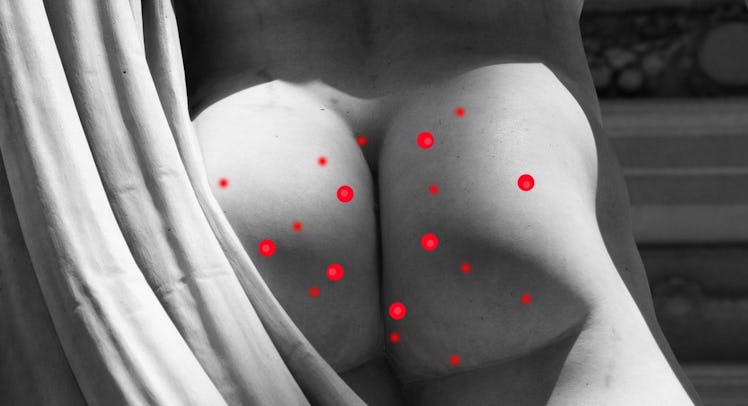Why Do I Have Pimples on My Butt?
It's like bacne, but for your other back.

Many adults and babies have their pimples on butts—but don’t mistake those tiny bumps for acne. Instead, butt pimples are almost always a condition known as folliculitis, which occurs when hair follicles become inflamed and produce harmless, acne-like bumps on your derriere.
“Folliculitis can be caused by an infection from bacteria, yeast, or fungus, irritation of hair follicles, or a blockage of hair follicles,” board-certified plastic surgeon Dr. Joseph Cruise told Fatherly. “It looks like a red, bumpy rash on the skin and is more likely to be itchy or irritating than painful. ”
Folliculitis is most often caused by Staphylococcus aureus bacteria, which is typically harmless and present on everyone’s skin. However, damp conditions can cause these bacteria to grow and infect hair follicles. Because staph bacteria and hair follicles are all over your body, folliculitis is not confined to the butt. At the same time, your behind is particularly vulnerable to irritation from fabrics and just warm, damp, dark, and sweaty enough to provide the perfect petri dish for staph.
There’s no particular reason to go to war against your butt pimples, but if you’re determined to get rid of them Cruise recommends a topical antibiotic cream, antibacterial body wash, and benzoyl peroxide (a lot of the same things used to tackle traditional acne). And showering after your workout or anytime you sweat, and wearing breathable, cotton clothing can help to prevent butt breakouts in the future.
Butt Pimples – Key Takeaways
- Butt pimples aren’t necessarily acne but could be folliculitis.
- Folliculitis could be caused by bacteria, yeast, fungus, or staph infections.
- Damp conditions favor the growth of bacteria like staphylococcus aureus.
- Topical antibiotic cream, Antibacterial body wash, and Benzoyl peroxide could help combat them.
- Wearing breathable clothing helps prevent breakouts.
This article was originally published on